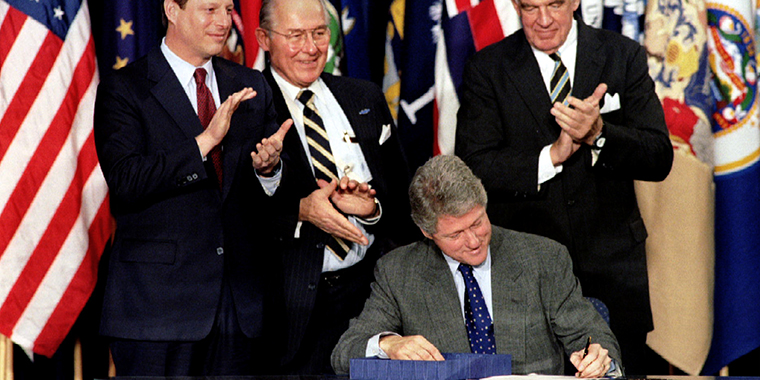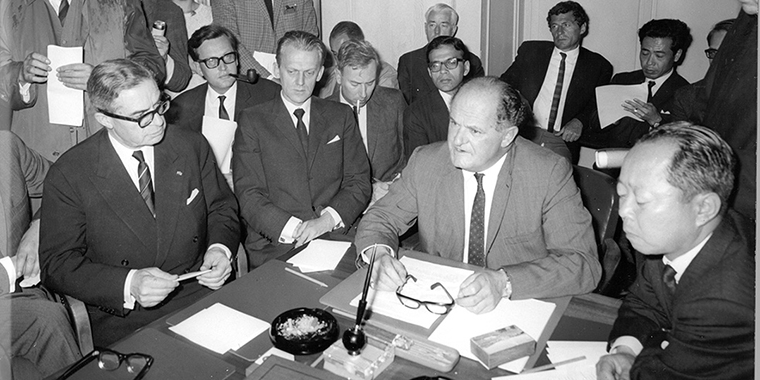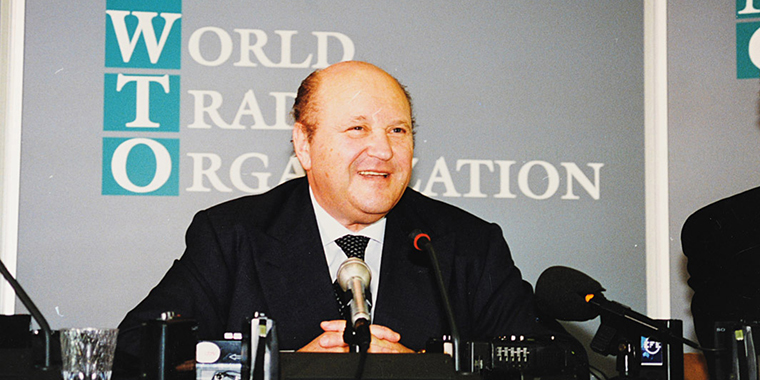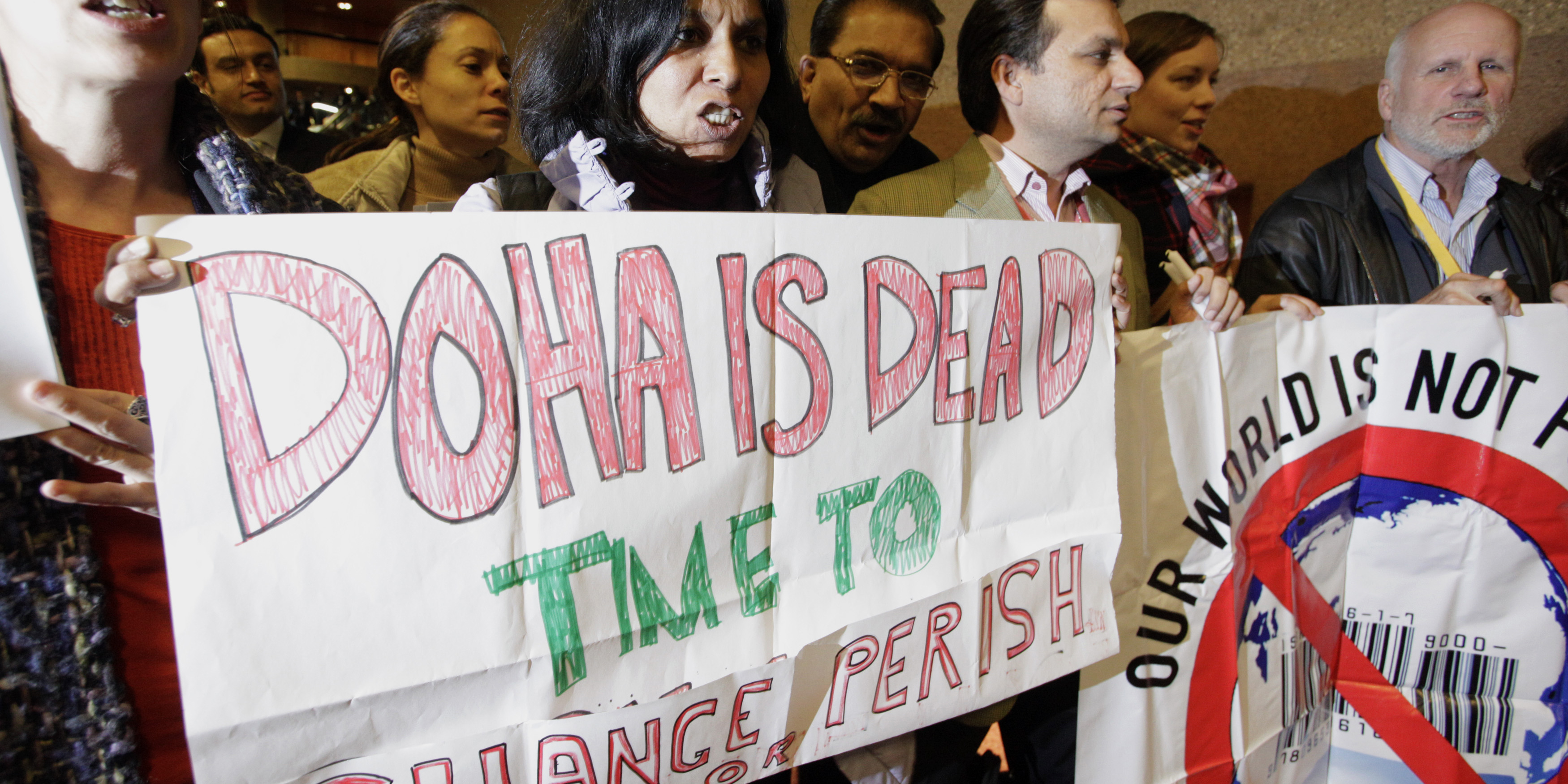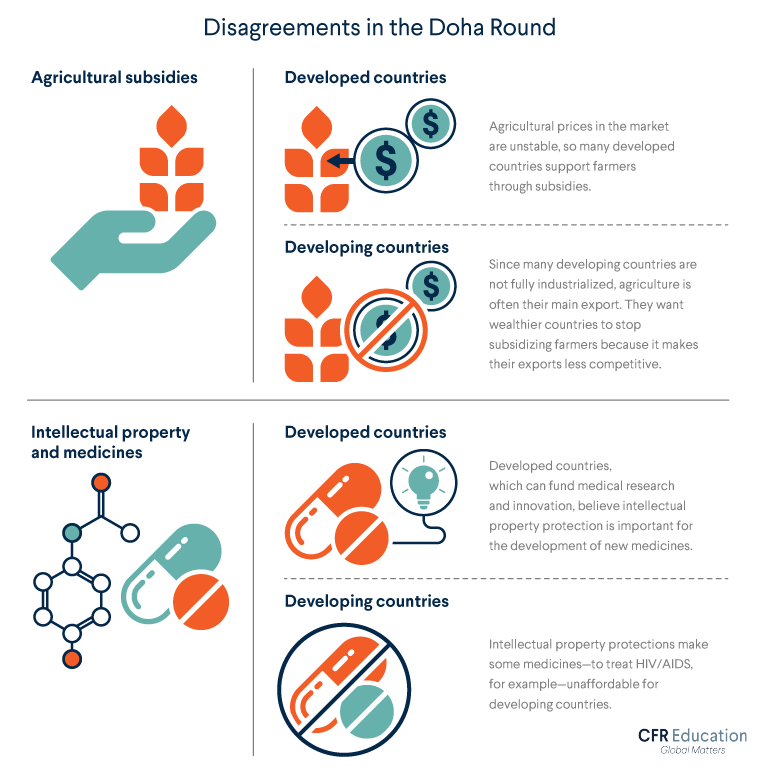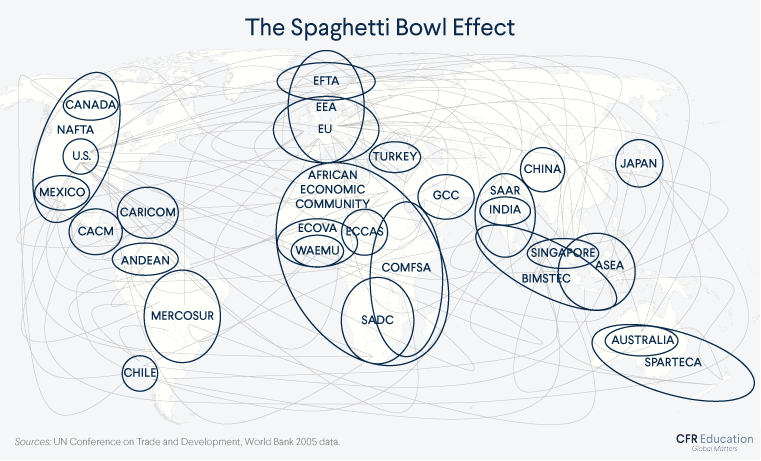How Trade Rules Are Written
The WTO system is the foundation of modern global trade. But as trade becomes more connected, with new challenges constantly emerging, trade agreements are adapting in order to keep up.
How do countries get what they want out of trade? How do they make sure other countries cooperate? And how do they solve disputes?
They make trade agreements. In a free trade agreement (FTA), countries agree on certain obligations to facilitate trade. Whether they are multilateral (between many countries) or bilateral (between two), these agreements cover more than just trade: they protect foreign investment, ensure intellectual property rights, and can influence labor standards, environmental regulations, e-commerce rules, and more.
While the history of trade is long, the history of modern trade agreements is not; we can trace the first multilateral trade agreement to just after World War II. Since then, international trade has exploded, and agreements are needed to govern all of it.
Multilateral Trade Agreements: from the GATT to the WTO
World War I was supposed to be the “war to end all wars.” But World War II, the largest and deadliest war in history, broke out twenty years later. World leaders believed that in order to create a lasting peace, they needed to forge more ties, particularly economic ones. President Franklin D. Roosevelt’s secretary of state, Cordell Hull, put it succinctly: “unhampered trade dovetail[s] with peace; high tariffs, trade barriers, and unfair economic competition, with war.”
These new connections needed new rules, and those rules needed new organizations to enforce them.
From one of those new organizations (the United Nations) sprang the General Agreement on Tariffs and Trade (GATT), built on the belief in a direct relationship between a global economy and enduring peace.
A Loose Agreement
The GATT was negotiated by twenty-three countries in 1947, and was meant to be a temporary stopover until a more robust organization came to fruition. But that next step took decades to materialize, and the GATT remained the sole multilateral agreement governing international trade between 1948 and 1995. In those forty-seven years, a growing roster of member countries met eight times in what were called rounds of tariff negotiations. By the end of the Uruguay Round, the GATT’s final meeting, average global tariffs had decreased from around 20 percent in 1947 to under 9 percent in 1994.
By the 1990s, the GATT had grown to 123 members. As its reach grew broader, it also became less useful: countries faced new challenges and became entangled in more disputes, but the GATT rules were shallow and did not offer guidance beyond limiting tariffs. Global trade rules needed an update.
A Global Organization
That update arrived in the form of the World Trade Organization (WTO), which was established on January 1, 1995, as the new governing body for international trade.
A formal organization rather than a provisional agreement, the WTO had a greater scope than the GATT, expanding the definition of trade to include services and intellectual property and creating new procedures to solve disputes.
WTO members agreed to uphold certain commitments or face penalties (compensation, usually). With its near-universal participation and broad coverage, the WTO led to an explosion of international trade. Trade in goods nearly quadrupled in its first twenty years.
The WTO Today
The WTO’s membership has expanded to 166 members, representing over 98 percent of international trade. New members include some of the world’s largest traders, such as China (which joined in 2001) and Russia (in 2012). Afghanistan and Liberia are the organization's newest members, joining in 2016.
In November 2001, the Doha Development Round, the most recent round of WTO negotiations, kicked off.
The Doha Round intended to focus on the priorities of less developed countries. But the talks stalled as countries failed to resolve some major issues. Here are a few areas of disagreements:
In 2015, developed and developing countries were unable to reach agreements on these and other sticking points, and the Doha talks collapsed.
Subsets of WTO members have continued plurilateral negotiations—which, unlike the Doha talks, do not require every country’s approval—on narrower trade issues, such as information technology, with some success. But the general rules have remained largely unchanged since 1995, calling into question the effectiveness of the WTO.
Beyond the WTO: Regional Trade Agreements
While the WTO may have stalled, global trade certainly has not. As the WTO has struggled to adapt to new challenges, the 1990s and 2000s saw a proliferation of regional trade agreements (RTAs).
Why do countries have RTAs, and does the WTO allow it?
In an ideal world, the WTO might be sufficient for regulating and encouraging global trade. However, while the WTO’s near-universal membership makes it legitimate, it also hampers its effectiveness. It is an organization where “nothing is agreed until everything is agreed.” Smaller, more agile bilateral and regional trade agreements can cover policy areas that are not regulated multilaterally, such as agricultural issues, e-commerce, health and safety standards, and investment protections. By anticipating modern challenges and tackling problems that have stalemated at the WTO, RTAs can often work alongside the multilateral system.
In theory, the WTO is opposed to chopping up the world into trade blocs, and one of its most important principles is the “most-favored nation” clause, which says countries cannot show preferential treatment toward some trade partners and not others. But RTAs are an exception to the rule; countries just need to notify the WTO if they create an RTA, and the WTO tracks them in a public database.
Significance of NAFTA
While not the first RTA, the North American Free Trade Agreement (NAFTA), was a landmark deal. It gradually eliminated most tariffs and facilitated unprecedented integration between two developed countries—the United States and Canada—and the less-developed Mexico. The agreement, which entered into force in 1994, was also the first U.S. trade agreement to include labor and environmental provisions. North American regional trade more than tripled. In 2018, the three countries signed a revised trade deal called the U.S.-Mexico-Canada Agreement, which updated NAFTA with new laws on the internet and intellectual property and restructured agreements on dairy and manufacturing businesses.
For the United States in particular, the post-NAFTA years saw an explosion of bilateral free trade agreements (FTAs), agreements between two countries. Countries create FTAs for economic and, since trade is a foreign policy tool, strategic purposes. The United States, for example, has initiated FTAs with Bahrain, Jordan, Morocco, and Oman to strengthen its position in the Middle East. South Korea signed a trade deal with the United States in 2007 to solidify U.S. support for peace negotiations with North Korea.
Mega-regional trade agreements: laboratories for trade issues
The most recent wave of trade agreements have been mega-regional agreements. These high-profile negotiations cover a lot of ground, both geographically—they span continents—and substantively. They strengthen some existing rules and establish new rules about issues such as digital trade and e-commerce, state-owned companies (which are common in Russia and China), and public health standards. They may provide a testing ground or “laboratory,” for new trade rules for future WTO agreements.
One of the most prominent examples of a mega-regional agreement is the Trans-Pacific Partnership (TPP). Encompassing 40 percent of the global economy, it nearly became the world’s biggest free trade deal. The TPP was a focal point of President Barack Obama’s strategic pivot to Asia, and it aimed to deepen economic ties across a wide swath of countries, eliminating tariffs and fostering trade. The United States withdrew in 2017, but a smaller version of the deal advanced without it.
In November 2020, a new agreement—the Regional Comprehensive Economic Partnership—eclipsed the TPP, creating the world’s largest trading bloc with fifteen countries across Asia and the Pacific. This deal, which includes China but not the United States, covers more than two billion people and nearly one-third of the global economy.
What's next?
There is an argument that RTAs undercut the effectiveness of the multilateral trading system as set up by the GATT and the WTO: they seek to address issues that would be better negotiated on the global level, and have reintroduced discriminatory trade practices that the “most-favored nation” principle was designed to eliminate. There is also the so-called spaghetti bowl effect to consider: as countries enter into multiple agreements, they may have difficulties reconciling disparate policies, making for a complicated landscape—like tangled, overlapping strands of spaghetti.
And, finally, some argue that the deeper scope of RTAs, compared to shallow WTO commitments, erode sovereign governments’ rights to create and enforce their own regulations.
But there is clearly a desire to write new rules for new challenges: the number of RTAs has skyrocketed in the past two decades. There were 366 active RTAs as of 2024, up from just 50 in 1990.
The rise of regional and mega-regional trade agreements raises an important question: are these agreements supporting the work of the WTO, or, by sectioning the world into trade blocs and creating their own procedures for solving disputes, are they undermining it? Their durability, and their implications for the system created in the wake of World War II, will continue to be debated.
For more on the WTO, check out What Is the World Trade Organization?
